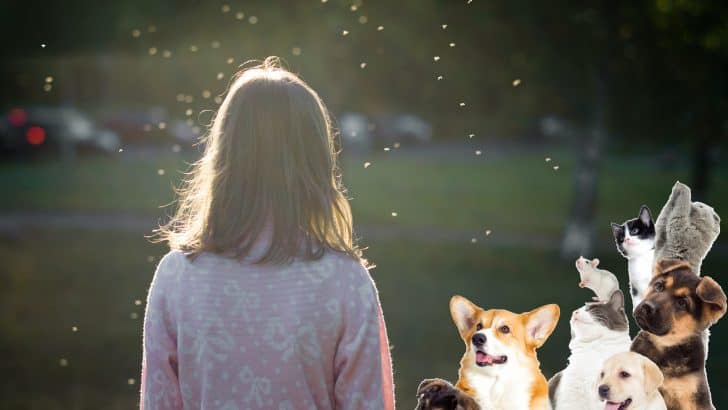Gnats are one of the scourges of the outdoors. And in actuality, the word “gnat” applies not to one specific flying bug but to a host of buzzing little demons that irritate humans at the picnic table.
However, for dogs, gnats are more than just a nuisance. They can be downright dangerous to your furry friend’s well-being. So, how do you keep gnats away from your pup?
Simply put, you can apply homemade or synthetic bug sprays on your dog to quickly keep gnats away. However, other natural and commercial methods exist for keeping gnats away from your dog, including keeping your dog and the yard clean and spraying your yard with gnat repellants.
To see a cloud of gnats swarming around a dog is heart-wrenching (especially if the poor guy is on a leash and can’t run away). With this article, I’m going to tell you how to keep gnats away from your dog. For the comfort and safety of your pet, let’s dive right in.
How to Keep Gnats Away From Your Gog
There’s more than one way to tackle this problem. We’ll start with the basics, working our way into more aggressive forms of attack for the tough cases.
1. Whip Up a Home Remedy
If you’re not keen on employing synthetic chemicals, you can use several home remedies to repel bugs from your dog. They are easy to create and apply as you can simply spray the solution onto your dog and brush it into your coat.
You can make a safe homemade bug spray for dogs from essential oils such as eucalyptus oil, witch hazel, vanilla extract, peppermint, or lavender.
Do follow the instructions for creating these bug sprays, as most essential oils can harm pets if used without dilution. Indiscriminate usage of essential oils can lead to accidental burns and poisoning, so please tread cautiously and check with your vet if you’re unsure.
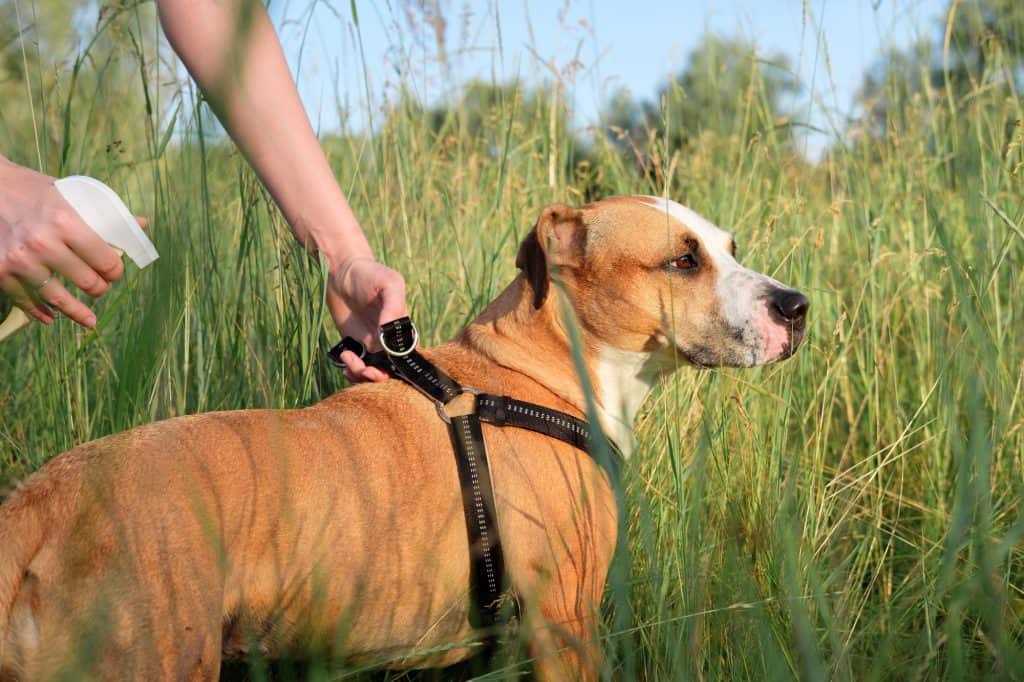
2. Buy Commercial Pet Spray-Ons
If you’re okay with using a synthetic product on your dog, the market is rife with choices. Mosquito repellants typically work just as well to repel gnats. Some mosquito repellents intended for humans can also be used on dogs, but check the label to be certain.
Synthetic products also tend to be more effective than natural solutions—though again, it’s essential to consider your dog’s reaction to these products.
3. Try Yard Spray-Ons
Before you pick up any yard sprays, remember that some chemical options for fighting gnats are safe for mammals, and some are not.
If you have already cleaned and trimmed your lawn but are still drawing gnats, check the market for yard treatment containing pyrethrin. Pyrethrin is botanical (part of it comes from chrysanthemums) and is not harmful to pets or people.
Some products will come right out and tell you: Saturate the grass with this to make your gnat troubles go away! And while their claim might be valid, don’t forget to read the fine print about whether or not they’re safe for dogs.
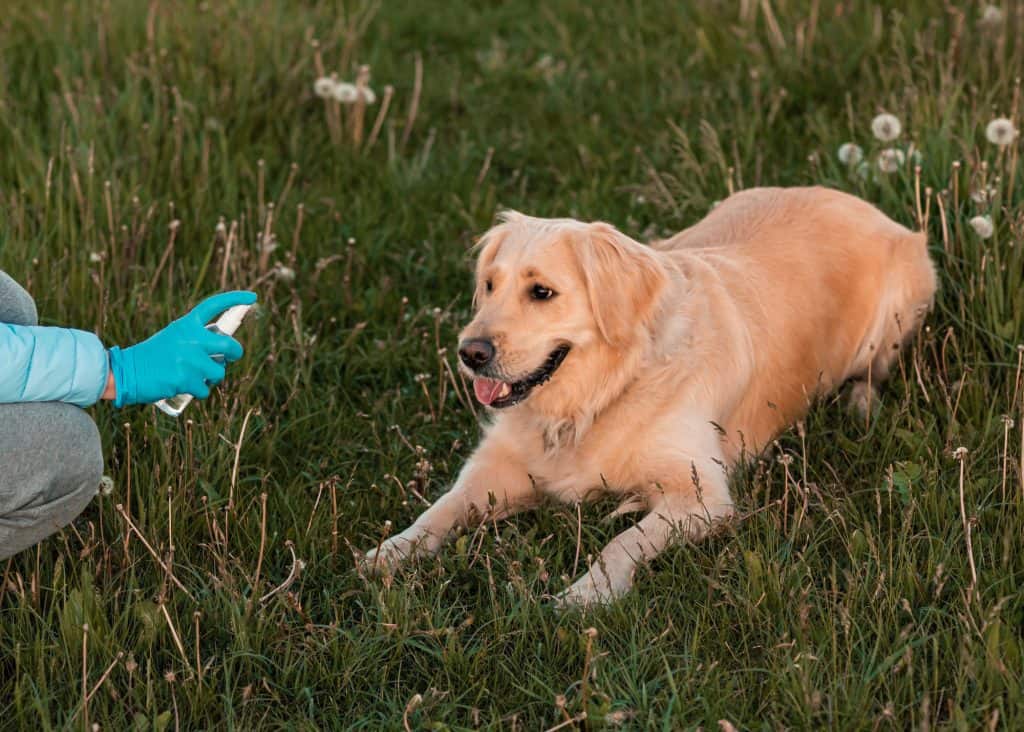
4. Use Diet to Make Your Dog Less Appealing to Gnats
You may also add ingredients to your dog’s food to make him less appealing to gnats. Among these is garlic. In small amounts, garlic will not be poisonous to your dog, and consuming garlic will make your dog’s blood less tasty to gnats. Be careful not to overdo it, and only offer your dog a clove of garlic in a day.
5. Protect Your Dog’s Coat and Ears
If your dog’s coat is dirty, the gnats will notice. After all, it isn’t just the blood these insects feed on. Depending on the species, they are attracted to rotting fruit, excrement, and decomposing plant matter.
The latter two can turn an unclean dog into a gnat magnet. Outdoor dogs should be bathed around twice a month—in this case, with anti-flea and tick shampoo. With a clean coat, a dog is far less likely to spur the appetite of flying pests.
Also, don’t forget to check your dog’s ears for dirt or open sores, like dinner bells for gnat clouds. Gnats can find the inner ear of their host to be quite cozy. Cozy enough to lay eggs can quickly become a nasty infection that threatens your dog’s health.
Your veterinarian likely carries ear-cleaning solutions for dogs. With this and a few balls of cotton, you’ll be able to keep your dog’s ears safe from insect invasions.
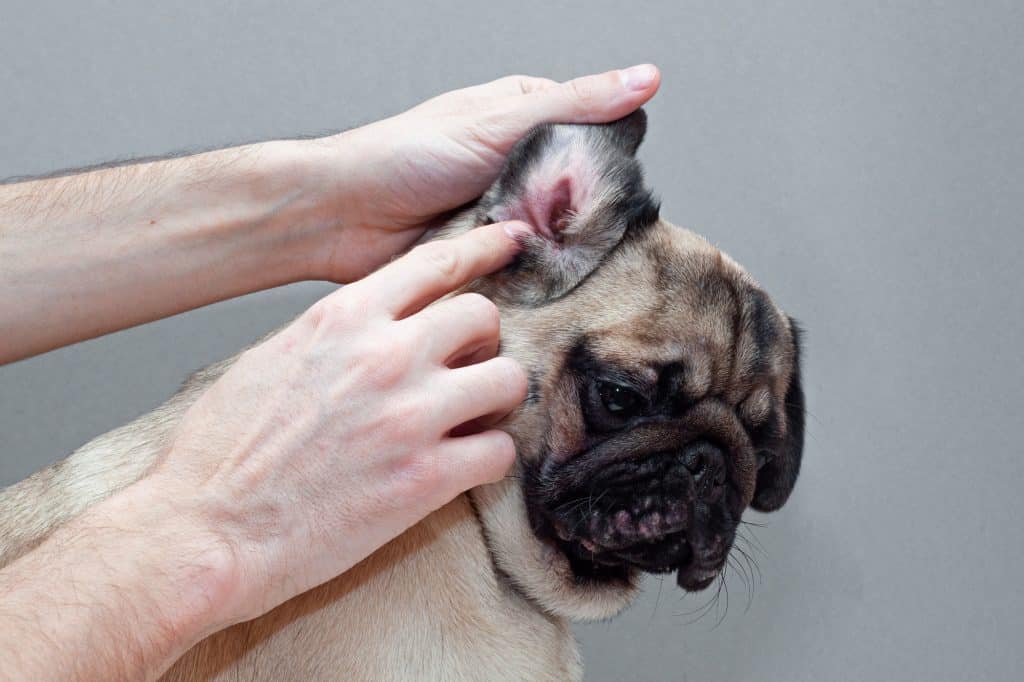
6. Keep Your Yard Clean
The soft fruit, excrement, and plant matter I mentioned in the previous section may not be on your dog but in the yard. No, I’m not accusing you of slovenly gardening. But as any spider will tell you—even the most gossamer thread can lure a fly.
Keep the ground free of dog waste and fallen fruit. Also, consider planting some things that mosquitoes tend to leave bad reviews for on Yelp, such as marigold or citronella.
Gnats love a stagnant pond, so if you have standing water in your yard, keep it clean and even add some motion to the water if possible. I have some great cleaning tips for stagnant water in my article about fixing pond smell and promoting healthy water.
I covered the above battle strategies first, but it is wise to know the ways of one’s adversary. With that in mind, the time has come to learn a little more about what gnats are.
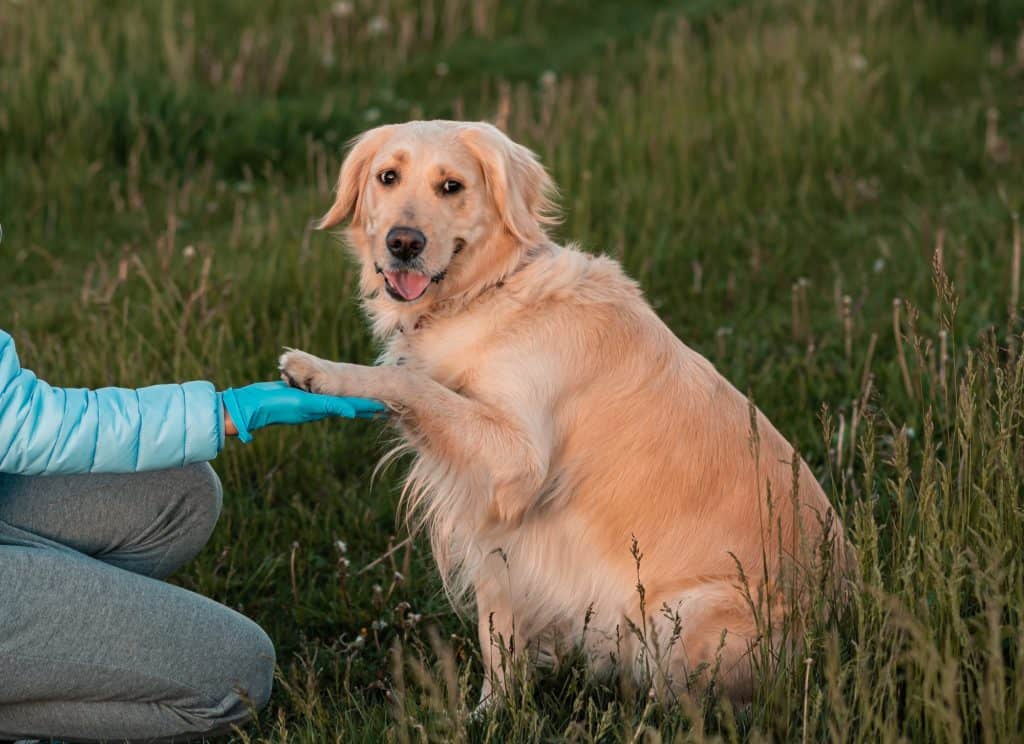
What Are Gnats and How Are They Dangerous to Dogs?
Gnats are legion, for they are many. Over 1,000 species of this insect swarm the planet. It’s almost a foregone conclusion that dogs encounter them at some point.
The word gnat is not technical (taxonomic) but a sweeping term for tiny flying bugs such as midges, mosquitoes, fruit flies, and any little biter with wings. As mentioned, they tend to feed on sweet-smelling things gone to rot, such as dying plants or old fruit.
Some female gnats need blood to make eggs. Here we find another reason for these pests to make your dog’s life miserable. Gnats may bite a dog at the eyes, in the ears, or near the anus.
Worse, these tiny creatures—whose wings sound a bit like violin strings when you hear them—are not only pesky but, at times, downright dangerous.
A gnat bite can draw blood. If left untreated, the open wound can develop into a full-blown infection. Puppies and older dogs are especially vulnerable to such, but even the healthiest dog is not immune.
Gnats also carry pathogens like salmonella and listeria. How they gain these pathogens depends on where else they’ve been flying around. In other words, gnats can pick up bacteria from one place and carry it to another, such as a dog.
Neither of these facts is meant to instill panic (we’ve all taken a few bug bites in our time, and so have dogs). Keeping gnats away from your home is the best way to avoid problems. Treatment is normally simple, even if your dog has already been exposed to parasites because of gnats.
Treating Gnat Bites on Dogs
Provided you catch the problem early, gnat bites on dogs are usually nothing to worry about. Some signs that he or she has been nipped include itching, red welts, ear shaking, or whining (who wouldn’t whine under an insect onslaught?).
Here are some ideas to try for less serious insect bites:
- Apply a cold compress to the bite
- Wash the bite with baking soda and water
- Give the dog an oatmeal bath
- Apply aloe vera on the bite
Don’t let the dog go on excessively scratching the bites. Like humans, the more the dog scratches, the more irritated the wound becomes. If your gnat problem is especially bad, bring the poor guy inside for a while.
Can a dog be hypersensitive to gnats? Sometimes. The condition is known as anaphylaxis—an oversensitive reaction to any causative agent. In these cases, it’s time to take your friend to a veterinarian.
Symptoms of anaphylaxis include vomiting, labored breathing, diarrhea, and convulsions. Don’t play around with severe allergic reactions; get medical assistance.
Conclusion
Pesky as they are, gnats are here to stay. But you can hold off their invasion with essential oils, synthetic products, and attention to cleanliness. Keep an eye on your dog’s living area for signs of gnats, such as dying plants or bite marks on your dog. It’s for the safety of you and yours.
Okay, that’s a wrap. Is it treat time yet? Go give your furry friend some TLC.
Sources
- Wikipedia: Gnat
- PetMD: Shoo-Fly: How to Keep Flies Off Dogs
- The Pioneer Woman: How to Clean Dog Ears at Home, Step by Step
- Houselogic: 7 Ways to Make Your Yard & Home a Bug-Free Zone
- Captain Patio: How to Fix Your Pond Smell and Promote Healthy Water
- Dogs Naturally: 10 Natural DIY Mosquito Repellents For Your Dog
- SFGate: Yard Treatment for Gnats
- Healthline: 5 Simple Ways to Treat Gnat Bites
- Food Quality & Safety: Study: Fruit Flies Can Spread Foodborne Pathogens

